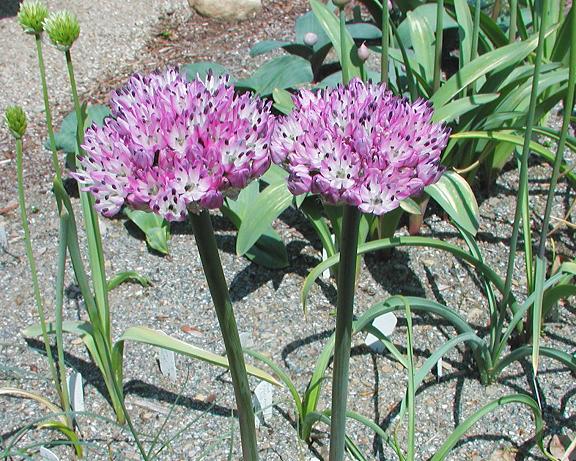Allium woronowii: Red Data Book of Armenia

EN B 1 ab(iii) + 2 ab(iii)
Category. Endangered species. It is situated in the northern part of the main area of distribution. The area is severely fragmented. The extent of occurrence is less than 5000 km2, the area of occupancy is less than 500 km2. The species faces decline of the extent of occurrence and the area of occupancy caused by anthropogenic factor and agricultural activity. It was wrongly included in the first edition of the Red Data Book of Armenia as a synonym of Alium derderianum. It is not included in the Annexes of CITES and that of the Bern Convention.
Description. Bulbous plant. Stem (5) 15–50 cm. Leaves (1) 2–4, linear– lanceolate or linear. Inflorescence broadly fasciculate or hemispherical. Perianth stellate–phialiform; segments pink to almost white, with purple or green midrib; narrowly elliptic, naviculate. Decorative plant.
Distribution. In Armenia it is found in Shirak (surroundings of the village Krashen) and Darelegis (surroundings of the villages Gyulliduz, Bartsruni, Gnishik, Mozrov) floristic regions. EOO is 570 km2, AOO is 20 km2, the number of locations is 4. It grows in Nakhichevan (village Aznaberd) and East Anatolia (Ararat mountain peak).
Ecological, biological and phytocoenological peculiarities. Grows in upper mountain belt, at the altitudes of 1800–2300 meters above sea level, on stony slopes, on limestone screes, in mountain steppes. Flowering in May, fruiting in June.
Limiting factors. Restricted extent of occurrence and area of occupancy, loss/degradation of habitats caused by tillage of the steppes and grazing.
Conservation actions. No conservation actions. Necessary: establishment of specially protected nature area between the villages Khachik and Gnishik.
Suggestions
 The Ministry of Environment sent a letter international partners to draw their attention to the real danger of environmental disasters as a result of Azerbaijan's large-scale aggression towards the territory of Armenia
The Ministry of Environment sent a letter international partners to draw their attention to the real danger of environmental disasters as a result of Azerbaijan's large-scale aggression towards the territory of Armenia
 Vicia pisiformis: Red Data Book of Armenia
Vicia pisiformis: Red Data Book of Armenia
 Vavilovia formosa: Red Data Book of Armenia
Vavilovia formosa: Red Data Book of Armenia
 Trigonella capitata: Red Data Book of Armenia
Trigonella capitata: Red Data Book of Armenia
 Trigonella astroides: Red Data Book of Armenia
Trigonella astroides: Red Data Book of Armenia












